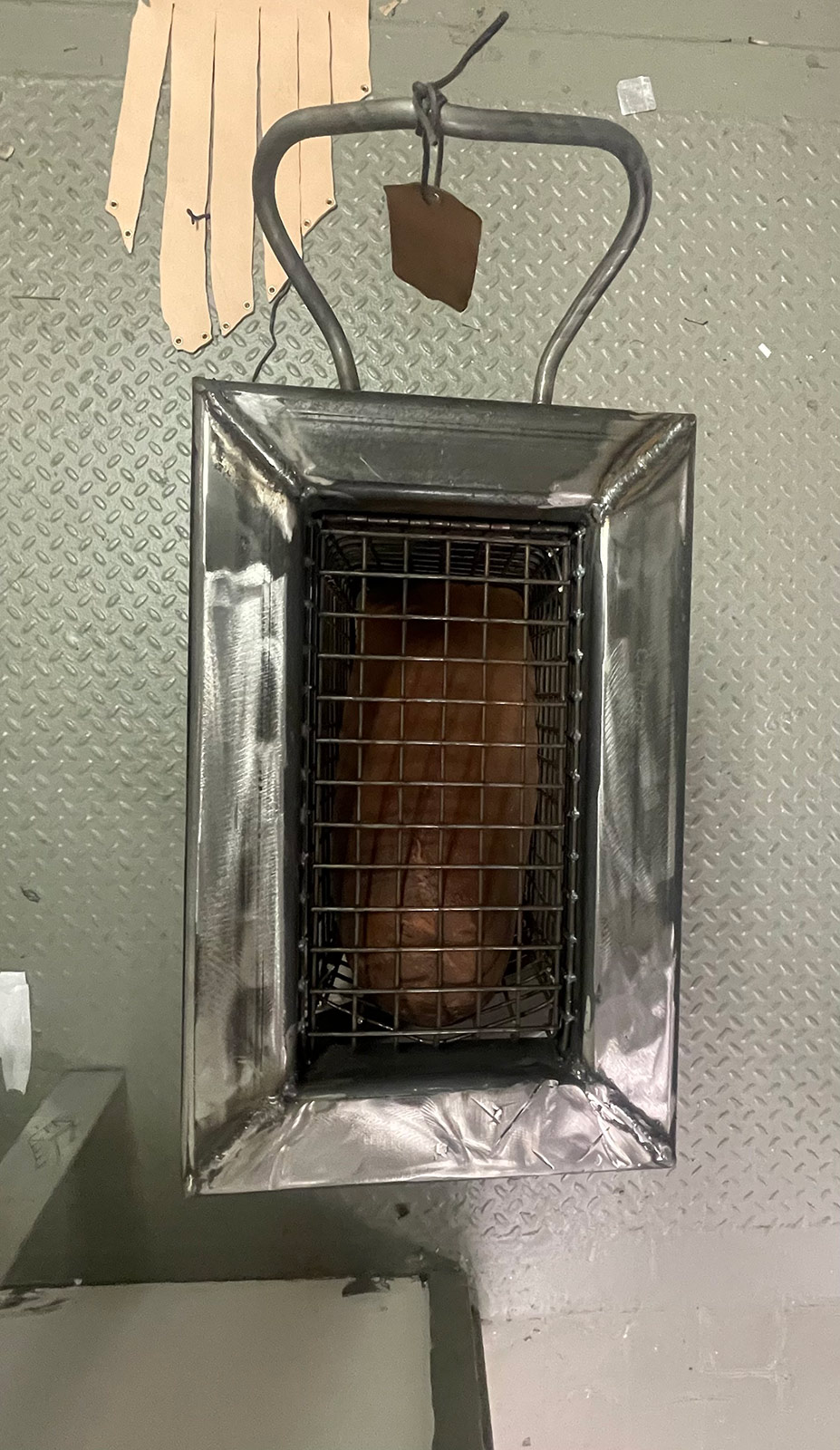Artist Isaiah Davis reflects on the industrial-grade legacy of the late post-Minimalist sculptor
I was introduced to Richard Serra’s work in a freshman-year sculpture class at Cooper Union. It was the first time I saw a fetishization of industrial-grade density as art. Fetish and fidelity, in some cases, go hand in hand. And, here was fidelity to steel with a masculine impulse to be impenetrable and take up space. I found Serra’s work beautiful, but arrogant in a way that inspires competition. I’d soon learn I wasn’t the only one: take David Hammons’s 1981 confrontation with a public sculpture by Serra, Pissed Off (Hammons pisses on it). Comprising three 72-ton corten plates, Serra’s sculpture was the ultimate competitor, like Mike Tyson, a man with contradictions and complexities, the heavy-weight champ who speaks with a thin voice and a lisp. I felt provoked to flex my proverbial big dick too and during undergrad I made an obvious Serra knock off. Shortly after posting it on Craigslist, I was contacted by his lawyers and told to remove the listing.
Upon learning that Serra had passed away, I felt a sense of relief. Like there’s been this pull on the canon of art, and now with this bookend to his legacy, a tension has been released. It’s always a loss when anyone dies, but Serra was one of the era’s greatest sculptors, who lived a full and enviable life for 85 years, with the privilege of being both critically celebrated in his time and remunerated financially. He lived in a world that was tailor-made for his kind of man. He pulled off a formidable scowl.
The bravado and sureness of Serra’s sculptural language is countered by gestures of curving and tilting. There’s a sense of stability. The feeling that these hard-body works of monumental scale will endure and stand the test of time. But they often appear as if they’re about to fall over. They can shapeshift depending on your perspective. A beautiful, distrusting presence, they loom. It’s no wonder they’ve become representative of this post-industrial moment of waning social consensus that’s developed over the past few decades into an encompassing uncertainty epitomized by widespread disinformation. This is rusted working-class materiality removed of function and transformed into luxury assets. At the same time, these immersive works require you to constantly locate yourself inside them. Serra said his work demands a lot of “peripatetic perception.” Your moving resculpts it.
Being exposed to Serra as a younger artist opened up a lot of possibilities for me, but more recently his practice hadn’t been at the front of my mind. I wasn’t working in dialogue with his oeuvre, at least not consciously. The past few months I’ve been working on these steel cages on castor wheels, each one about the scale of a medium-sized dog. I wasn’t thinking much about Serra—the man who I think of as this master of magnitude. In the past decade, he made his tallest ever works, 55-feet-high in the Qatari desert. But the day Serra passed away, I found out that he had made cages too, in Rome as a young man in the 1960s, one of his first gestures after deciding he was done with painting. Stuffed and live animals filled these enclosures. He later told the art historian Hal Foster that he’d made them “to do anything to get away from my education, from all of it.” Sometimes you have to build a cage to escape.
Isaiah Davis is an artist living and working in New York City. He’s a 2023 Rema Hort Mann Foundation recipient and in the Columbia MFA class of 2025. In 2021, he presented I HAVE NO MOUTH AND I MUST SCREAM, a solo exhibition of sculptural video installation, at Participant Inc.















